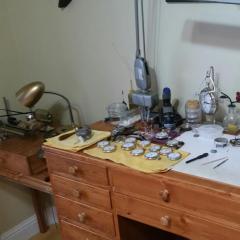Often someone has a problem with a watch and after searching the internet, are fortunate to come across this forum. And after a reply are never heard of again and no feedback given as to the outcome. Then we have the individual, after the purchase of a hammer and chisel, usually of Chinese manufacture, believe they can undertake repairs and servicing. The general rule of thumb to be competent, would of had served under an experienced watchmaker for 6 years and then had a further 9 years practical experience, to be "Competent " There are professional people on the forum prepared to help and also talented amateurs. Then you have tinkerers such as myself, who have some successes and also failures but not before a lot of heartache. To try and help you, the guys on the forum will need to know specifically what you've done and where. Also lots of close up pictures of the movement. In the absence of this, the best advice I can give is to locate a reputable watch repairer. Sent from my SM-T585 using Tapatalk




